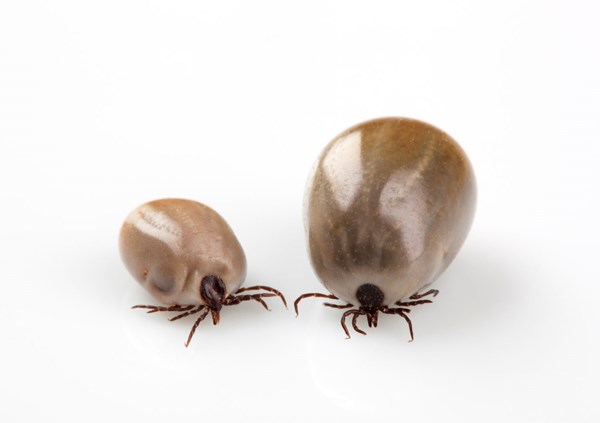 Credit: Thinkstock The tick-borne disease anaplasmosis can be fatal if not treated.
Credit: Thinkstock The tick-borne disease anaplasmosis can be fatal if not treated.Anaplasmosis is the tick-transmitted disease that most commonly causes illness in horses. The causative organism, Anaplasma phagocytophilum, is a bacterium that was previously called Ehrlichia equi, hence the persistent older disease name, equine ehrlichiosis. Ticks can also transmit this organism to humans and other animal species, including dogs and livestock, resulting in similar clinical illness.
Most commonly, the bacteria are transmitted from small mammals such as deer mice and wood rats via deer ticks, which may also be infected with the bacterium causing Lyme disease, Borrelia burgdorferi. In horses, clinical signs of anaplasmosis usually appear 10? 45 days after infection. Fever is typically accompanied by limb swelling, and the appearance of small hemorrhages on the mucous membranes of the nose, mouth, eyes and/or vulva. Much less commonly, signs of incoordination, muscle inflammation or digestive tract pain may be observed.
Diagnosis is based on clinical signs in a horse with possible tick exposure during warm weather. The veterinarian attending the horse may confirm the diagnosis by drawing blood to assess the platelet count (cells responsible for clotting) which are usually low, and to look for the organism in white blood cells, particularly neutrophils. At the time the horse shows signs of illness, a raspberry?like structure called a morula may be observed in some of these white blood cells of an infected horse. Blood can also be sent off to a lab for molecular tests for the organism or looking for antibody, but this is seldom necessary.
The disease can be fatal if not treated. Antibiotic treatment is usually very effective if the horse is treated soon after the signs of illness begin. The antibiotic of choice is oxytetracycline, which is administered intravenously at least once a day for 5?10 days. Oral doxycycline may be recommended either following initial oxytetracycline treatment, or in settings where daily veterinary visits are not feasible. Both antibiotics carry a slight risk of causing diarrhea. Relapses may occur if antibiotic treatment is too short. Other supportive care, such as non-steroidal anti?inflammatory drugs (NSAID, eg. Banamine), and leg support wraps are often employed.
Julia Wilson, DVM, authored this article on behalf of the Minnesota Veterinary Medical Association in the University of Minnesota’s horse newsletter.


